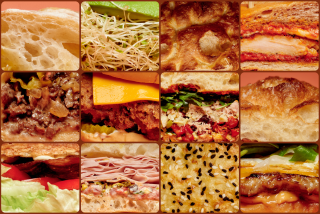Chicken wings take flight in restaurants
Delphine at the W Hollywood hotel, known for its raw seafood bar and steaks, recently experimented with a new dish: chicken wings.
With a limited-time menu featuring niblets slathered with truffle-laced cheese and other flavorings, the upscale restaurant isn’t the only one taking the once-lowbrow bar staple to a new level.
At Sunny Spot in Venice, chef Roy Choi placed his What a Jerk Wings next to the whole roasted fish and Two Fisted Cheeseburger. Ludo Lefebvre, known for his love of foie gras and his French culinary pedigree, serves honey garlic-glazed wings from his cult favorite truck.
Wings are driving scorching sales at specialty chains, getting the gourmet treatment at fancy restaurants and even emerging in good-for-you vegan versions. Their presence on menus has increased 19% since 2009, according to market research firm Mintel.
As a party food, they’re quickly gaining on ribs and nachos, so expect a lot of wings on the table on the Fourth of July, one of the five most popular days for wing consumption along with the Super Bowl and college basketball’s March Madness finals.
“They’re going gangbusters,” said Nick Setyan, a restaurant analyst with Wedbush Securities. “These wings guys were the only ones able to take advantage of this kind of environment.”
The dish can thank the recession and the burgeoning snacking and street food culture for its meteoric popularity.
Chicken managed to evade the rising food prices that made beef and pork especially expensive last year. Although chicken breasts still command the majority of chicken sales, wings now constitute 9% — the same percentage as drumsticks and nearly as much as whole chickens, according to consulting firm Nielsen Perishables Group. In all, 36 billion wing segments were sold domestically last year, or about 115 wing bits per person.
Specialty establishments such as Wingstop and Buffalo Wild Wings Grill & Bar — whose stock has soared more than 150% since the end of the downturn — are among the 10 fastest-growing restaurant chains in the country, according to research group Technomic. In California, companies such as Hotwings and Big Wangs are also expanding.
More than a third of all chain eateries now offer wings in some form. Yelp now offers a chicken wings category for users trying to sort restaurants. Attendance at the National Buffalo Wings Festival in Buffalo, N.Y., has doubled in the last decade.
And as ethnic and street foods gain popularity, wing-centric Korean chains such as KyoChon, QChon and Bonchon have blossomed in Los Angeles. Vegetarians and vegans can nosh on wings made with Gardein and other meat substitutes at Southland restaurants including Native Foods and Yard House.
Wing businesses thrived during the recession as the rest of the food service industry tightened. By offering cheap meals — a 35-piece family pack at Wingstop costs less than $30 in Los Angeles — wing eateries could attract price-conscious customers.
They were able to open in poorer areas such as Victorville, which pricier chains have found difficult to penetrate, said Setyan of Wedbush. That meant less competition for retail and commercial space, cheaper real estate and better profit margins.
“They’re probably the most affordable indulgence out there in an environment where relative value is winning,” Setyan said.
The six Southland stores in the Fresh Brothers chain go through several tons of wings a week, said founder and Chief Executive Adam Goldberg. Since the pizza company launched four years ago, more customers are ordering wings as entrees, he said.
“We’ve run into times where there’s a shortage of wings,” Goldberg said.
But as wing demand soars, their cost is also booming.
Last summer, wing costs were at a multiyear low of 90 cents a pound. They’ve since more than doubled, said William Roenigk, chief economist at the National Chicken Council.
About 9 billion chickens are produced each year, yielding two wings, each of which has three edible sections — the drumette, the flapper and the wing tip. The tips are usually exported to Asia, leaving about 36 billion wing parts for U.S. consumption.
Supply is dependent on demand for chicken breasts, which lately has been low, Roenigk said. And as the birds get meatier, farmers see less need to produce more of them.
And with NFL season approaching, analysts don’t expect wing prices to retreat until mid-2013. But the high prices haven’t pushed wings off menus, Roenigk said.
“Rather than charging $5 for eight wings, they can now charge $12,” he said. “Restaurant owners are getting more creative and upscale.”
More to Read
Inside the business of entertainment
The Wide Shot brings you news, analysis and insights on everything from streaming wars to production — and what it all means for the future.
You may occasionally receive promotional content from the Los Angeles Times.











